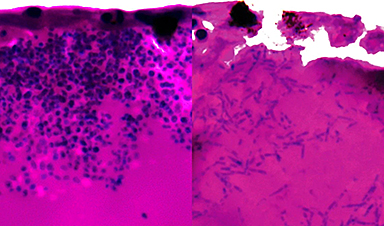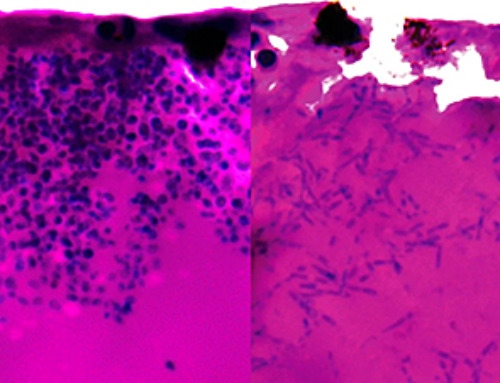A study from Keck Medicine of USC found that heavy drinkers with diabetes, high blood pressure, or a large waistline are up to 2.4 times more likely to develop advanced liver disease. These conditions may amplify alcohol's toxic effects on the liver, leading to severe damage.
Not everyone who drinks the same amount of alcohol faces the same risk of liver disease. A new study published on February 3 in Clinical Gastroenterology and Hepatology by Keck Medicine of USC suggests that three common health conditions — diabetes, high blood pressure, and a high waist circumference — could be key factors. Researchers found that heavy drinkers with any of these conditions are up to 2.4 times more likely to develop advanced liver disease.
"The results identify a very high-risk segment of the population prone to liver disease and suggest that preexisting health issues may have a large impact on how alcohol affects the liver," said Brian P. Lee, MD, MAS, a hepatologist and liver transplant specialist with Keck Medicine and principal investigator of the study.
The Link Between Cardiometabolic Health and the Liver
Diabetes, high blood pressure, and a high waist circumference (defined as over 35 inches for women and 40 inches for men) are part of a group of five cardiometabolic risk factors. These conditions, commonly linked to obesity, also increase the risk of heart attacks and strokes.
Cardiometabolic risk factors have been linked to the buildup of fat in the liver (also known as metabolic dysfunction-associated steatotic liver disease), which can lead to fibrosis, or scarring of the liver. These risk factors affect more than one in three Americans, and cardiometabolic health has been worsening among the population, especially among those under 35, according to Lee.
Rising Alcohol Consumption and Its Consequences
Alcohol also causes fat buildup in the liver, and alcohol consumption has been on the rise since the COVID-19 pandemic, said Lee. Due to the prevalence of both cardiometabolic risk factors and drinking in the United States, Lee and his fellow researchers undertook the study to investigate which cardiometabolic risk factors predisposed the liver to damage from alcohol.
They analyzed data from the National Health and Nutrition Examination Survey, a large national survey of more than 40,000 participants, looking at the intersection of heavy drinking, individual cardiometabolic risk factors and the incidences of significant liver fibrosis. Significant liver fibrosis refers to liver scarring that can lead to liver failure.
For the study, heavy drinking was characterized as 1.5 drinks a day for women (20 grams) and two drinks a day for men (30 grams).
Who Is at the Highest Risk?
Researchers discovered that heavy drinkers with either diabetes or a high waist circumference were 2.4 times more likely to develop advanced liver disease and those with high blood pressure 1.8 times more likely. They found that the other two cardiometabolic risk factors — high triglycerides (elevated levels of a type of fat in the blood) and low HDL (high-density lipoprotein or "good" cholesterol) had less significant correlations to liver disease.
Why Are These Risk Factors So Dangerous?
While the study did not analyze why these three cardiometabolic risk factors are more dangerous for the liver, Lee speculates that these conditions share a common pathway to fat buildup in the liver that when combined with extra fat deposits in the liver from excessive alcohol, can cause significant damage.
Lee emphasizes that the study does not imply it is safe for those without these three cardiometabolic risks to consume large amounts of alcohol. "We know that alcohol is toxic to the liver and all heavy drinkers are at risk for advanced liver disease," he said.
Lee hopes that the study results will encourage people to consider their individual health and risk profile when making decisions about alcohol consumption. He would also like to see practitioners offer more personalized health screenings and interventions for those who drink with cardiometabolic risk factors so that liver damage among this high-risk group can be caught early and treated.
Reference: "Association of Alcohol and Incremental Cardiometabolic Risk Factors with Liver Disease: A National Cross-Sectional Study" by Brian P. Lee, MD, MAS, Justene Molina, MPH, Steve Kim, MPH, Jennifer L. Dodge, MPH and Norah A. Terrault, MD, MPH, 3 February 2025, Clinical Gastroenterology and Hepatology.
DOI: 10.1016/j.cgh.2025.01.003
News
AI Helped Scientists Stop a Virus With One Tiny Change
Using AI, researchers identified one tiny molecular interaction that viruses need to infect cells. Disrupting it stopped the virus before infection could begin. Washington State University scientists have uncovered a method to interfere with a key [...]
Deadly Hospital Fungus May Finally Have a Weakness
A deadly, drug-resistant hospital fungus may finally have a weakness—and scientists think they’ve found it. Researchers have identified a genetic process that could open the door to new treatments for a dangerous fungal infection [...]
Fever-Proof Bird Flu Variant Could Fuel the Next Pandemic
Bird flu viruses present a significant risk to humans because they can continue replicating at temperatures higher than a typical fever. Fever is one of the body’s main tools for slowing or stopping viral [...]
What could the future of nanoscience look like?
Society has a lot to thank for nanoscience. From improved health monitoring to reducing the size of electronics, scientists’ ability to delve deeper and better understand chemistry at the nanoscale has opened up numerous [...]
Scientists Melt Cancer’s Hidden “Power Hubs” and Stop Tumor Growth
Researchers discovered that in a rare kidney cancer, RNA builds droplet-like hubs that act as growth control centers inside tumor cells. By engineering a molecular switch to dissolve these hubs, they were able to halt cancer [...]
Platelet-inspired nanoparticles could improve treatment of inflammatory diseases
Scientists have developed platelet-inspired nanoparticles that deliver anti-inflammatory drugs directly to brain-computer interface implants, doubling their effectiveness. Scientists have found a way to improve the performance of brain-computer interface (BCI) electrodes by delivering anti-inflammatory drugs directly [...]
After 150 years, a new chapter in cancer therapy is finally beginning
For decades, researchers have been looking for ways to destroy cancer cells in a targeted manner without further weakening the body. But for many patients whose immune system is severely impaired by chemotherapy or radiation, [...]
Older chemical libraries show promise for fighting resistant strains of COVID-19 virus
SARS‑CoV‑2, the virus that causes COVID-19, continues to mutate, with some newer strains becoming less responsive to current antiviral treatments like Paxlovid. Now, University of California San Diego scientists and an international team of [...]
Lower doses of immunotherapy for skin cancer give better results, study suggests
According to a new study, lower doses of approved immunotherapy for malignant melanoma can give better results against tumors, while reducing side effects. This is reported by researchers at Karolinska Institutet in the Journal of the National [...]
Researchers highlight five pathways through which microplastics can harm the brain
Microplastics could be fueling neurodegenerative diseases like Alzheimer's and Parkinson's, with a new study highlighting five ways microplastics can trigger inflammation and damage in the brain. More than 57 million people live with dementia, [...]
Tiny Metal Nanodots Obliterate Cancer Cells While Largely Sparing Healthy Tissue
Scientists have developed tiny metal-oxide particles that push cancer cells past their stress limits while sparing healthy tissue. An international team led by RMIT University has developed tiny particles called nanodots, crafted from a metallic compound, [...]
Gold Nanoclusters Could Supercharge Quantum Computers
Researchers found that gold “super atoms” can behave like the atoms in top-tier quantum systems—only far easier to scale. These tiny clusters can be customized at the molecular level, offering a powerful, tunable foundation [...]
A single shot of HPV vaccine may be enough to fight cervical cancer, study finds
WASHINGTON -- A single HPV vaccination appears just as effective as two doses at preventing the viral infection that causes cervical cancer, researchers reported Wednesday. HPV, or human papillomavirus, is very common and spread [...]
New technique overcomes technological barrier in 3D brain imaging
Scientists at the Swiss Light Source SLS have succeeded in mapping a piece of brain tissue in 3D at unprecedented resolution using X-rays, non-destructively. The breakthrough overcomes a long-standing technological barrier that had limited [...]
Scientists Uncover Hidden Blood Pattern in Long COVID
Researchers found persistent microclot and NET structures in Long COVID blood that may explain long-lasting symptoms. Researchers examining Long COVID have identified a structural connection between circulating microclots and neutrophil extracellular traps (NETs). The [...]
This Cellular Trick Helps Cancer Spread, but Could Also Stop It
Groups of normal cbiells can sense far into their surroundings, helping explain cancer cell migration. Understanding this ability could lead to new ways to limit tumor spread. The tale of the princess and the [...]





















